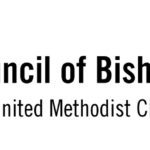
By: Ella Rawls
Editor’s Note: On June 25, 2020, the Supreme Court ruled asylum seekers could not challenge their removal. What follows is a commentary on the case from Ella Rawls, Esq., Chair: DSC Immigration Task Force and attorney for Arizona Justice for Our Neighbors.
Today’s case shows why we should continue to allow for judicial review of immigration court determinations, and specifically for the purpose indicated in this case: reviewing credible fear determinations. While the facts of this case seem to solely indicate a case of judicial review, Supreme Court Justice Sonia Sotomayor astutely foretells how the greater issue is the potential disappearance of protections for noncitizens in the United States.
In order to understand how Justice Sotomayor arrives at the danger of eroding the rights of noncitizens, we have to examine how our current immigration court system works.
When someone is going through removal proceedings (the US government alleges such an individual is not lawfully present in the United States), they have certain protections granted by the United States constitution. The best known is Due Process, which consists of procedural due process to ensure that the individual is entitled to a fair and just judicial procedure; and substantive due process, where individual rights are protected. Another protection afforded by the constitution is the Suspension Clause, that allows for one to challenge the basis of their detention and demand their day in court (a habeas corpus petition).
When that individual is found within 100 miles of our land border or is caught within 14 days of arriving in the United States, the above protections are abridged, severely. In 1996, Congress passed the Illegal Immigration Reform and Immigrant Responsibility Act of 1996 (IIRAIRA). This was a sweeping, comprehensive immigration enforcement bill that changed cross border traffic, and created harsh immigration penalties for those entering and leaving the United States unlawfully. This is where the expedited removal process came into being, and we had two sets of rules: Those who are caught within 100 miles of the border or those who cannot provide proof they have been in the United States longer than 14 days, are subject to expedited removal, and are not given a full opportunity to apply for immigration relief/put forth their full immigration defense.
In the present case, the Supreme Court says that someone who is 25 yards into US soil did not actually enter the US and are an “applicant” for entry. Therefore, they are treated as if they are on the port of entry itself and are afforded less protections. All of this is important to understand because when the Supreme Court says that the individual was given “due process” he means that the expedited (most likely telephonic) interview with an asylum officer happened, where the individual might have had an attorney present, within a very short time after having been detained by Customs and Border Protection. It also means that when an Immigration Judge, many of whom in Arizona have compassion fatigue, agreed on the determination, the process ended. While the credible fear interview(CFI) is meant to be a low threshold bar through which to weed out fraudulent asylum claims, this administration has pressured both USCIS and Immigration Judges to use a more stringent standard than the traditional approach. This stage was meant to open the door for a full, comprehensive showing of the individual’s asylum case, yet this individual was denied that opportunity.
Again, this ruling has implications that reach far beyond this individual asylum seeker, as the determination of whether to give meaningful process to those in our border region is already curtailed.
“Taken to its extreme, a rule conditioning due process rights on lawful entry would permit Congress to constitutionally eliminate all procedural protections for any noncitizen the Government deems unlawfully admitted and summarily deport them no matter how many decades they have lived here, how settled and integrated they are in their communities, or how many members of their family are U.S. citizens or residents,” Sotomayor wrote in her dissent, joined by fellow liberal Elena Kagan.
“This judicially fashioned line-drawing is not administrable, threatens to create arbitrary divisions between noncitizens in this country subject to removal proceedings, and, most important, lacks any basis in the Constitution.”
In today’s decision our highest court declines to engage in the checks and balances that our founders so carefully entrusted into their hands.
https://www.cnn.com/2020/06/25/politics/asylum-request-thuraissigiam-supreme-court/index.html




